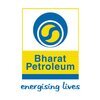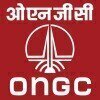Filter interviews by
Indian Oil Corporation Instrumentation Trainee Interview Questions and Answers
Indian Oil Corporation Instrumentation Trainee Interview Experiences
1 interview found
Interview Questionnaire
4 Questions
- Q1. Why Instrumentation system used in Company
- Ans.
Instrumentation systems are used in companies to monitor and control various processes and equipment.
Instrumentation systems help in ensuring the safety and efficiency of operations.
They provide real-time data on process variables such as temperature, pressure, flow rate, and level.
By monitoring these variables, companies can detect and prevent potential issues or failures.
Instrumentation systems also enable automation...
- Q2. Why 4-20ma signal used not 0-20ma
- Ans.
4-20mA signal is used instead of 0-20mA because it allows for a reliable and accurate measurement of the process variable.
4-20mA signal provides a clear distinction between zero and full-scale measurement.
It allows for easy detection of faults or breaks in the circuit.
The 4mA minimum value ensures that the signal is always present, even if the measurement is at its lowest possible value.
The 20mA maximum value provides ...
- Q3. Tells about the Flow measurement instruments
- Ans.
Flow measurement instruments are devices used to measure the rate of flow of fluids or gases.
Flow meters are commonly used instruments for flow measurement.
Some common types of flow meters include electromagnetic flow meters, ultrasonic flow meters, and turbine flow meters.
Electromagnetic flow meters use Faraday's law of electromagnetic induction to measure flow.
Ultrasonic flow meters use ultrasonic waves to measure fl...
- Q4. How thermocouple works
- Ans.
A thermocouple is a temperature sensor that works based on the principle of the Seebeck effect.
A thermocouple consists of two different metal wires joined together at one end.
When there is a temperature difference between the two junctions, it creates a voltage.
This voltage is proportional to the temperature difference and can be measured using a voltmeter.
Thermocouples are commonly used in industrial applications for ...
Top trending discussions






Interview questions from similar companies

Junior Engineer Interview Questions & Answers
Hindustan Petroleumposted on 9 Jun 2024
I applied via Walk-in and was interviewed in May 2024. There was 1 interview round.
(2 Questions)
- Q1. What are you responsibility on this pleace
- Q2. What is the Them leader

I applied via Naukri.com and was interviewed in Oct 2020. There were 3 interview rounds.
Interview Questionnaire
1 Question
- Q1. The HR round was very pathetic. Sreethala took my HR round.
Interview Preparation Tips
Mumbai location. They will take all the interview rounds. The HR will ask you to submit all documents and last moment they will cancel your candidature without giving you any specific reason.

I applied via Recruitment Consultant and was interviewed in Dec 2020. There were 6 interview rounds.
Interview Questionnaire
2 Questions
- Q1. 1st round is technical , 2nd is values & behaviors , 3rd is assessment road
- Q2. Be clear on values & behaviours , practice assement round offline before attempting
Interview Preparation Tips

I applied via Company Website and was interviewed in May 2024. There were 2 interview rounds.
Behavioral questions and resume delve
Pmi - product management information
Interview Preparation Tips

I applied via Company Website and was interviewed before Aug 2023. There was 1 interview round.
(3 Questions)
- Q1. Explain the well integrity and well barrier elements.
- Ans.
Well integrity and well barrier elements are crucial components in ensuring the safety and efficiency of oil and gas wells.
Well integrity refers to the ability of a well to contain fluids within the intended zones and prevent any leaks or failures.
Well barrier elements are physical or mechanical barriers that are put in place to prevent the escape of fluids from the wellbore.
Examples of well barrier elements include ca...
- Q2. Explain the processes involved in Upstream.
- Ans.
Upstream processes involve exploration, drilling, and production of oil and gas.
Exploration: Involves searching for potential oil and gas reserves using seismic surveys and other techniques.
Drilling: Once a potential reserve is identified, wells are drilled to extract the oil and gas.
Production: Oil and gas are extracted from the wells and processed for distribution.
Examples: Offshore drilling in the Gulf of Mexico, sh...
- Q3. Did you have any conflict with your supervisor of any others?
- Ans.
No conflicts with supervisor or others.
I have not had any conflicts with my supervisor or colleagues.
I believe in open communication and resolving issues professionally.
I prioritize teamwork and collaboration to prevent conflicts from arising.
Interview Preparation Tips

Senior Engineer Interview Questions & Answers
Bharat Petroleumposted on 4 Dec 2021
I applied via Company Website and was interviewed in Nov 2021. There were 4 interview rounds.
Interview Questionnaire
2 Questions
- Q1. About work experience and responsibilities
- Q2. Why you are leaving to present job
Interview Preparation Tips

I applied via Recruitment Consulltant and was interviewed before Nov 2022. There were 2 interview rounds.

(5 Questions)
- Q1. Transformer testing
- Q2. Transformer protection
- Q3. SAP Maintenance module
- Q4. Spare maintenance philosophy
- Ans.
Spare maintenance philosophy focuses on maintaining spare parts to minimize downtime and ensure efficient operations.
Spare maintenance philosophy aims to have a sufficient inventory of spare parts to quickly replace any faulty components.
It involves regular inspections and maintenance of spare parts to ensure their functionality and readiness.
The philosophy emphasizes proactive planning and forecasting to anticipate th...
- Q5. Planning strategy
Interview Preparation Tips
- Maintenance straight
- SAP

I applied via Naukri.com and was interviewed in Oct 2021. There were 3 interview rounds.
Interview Questionnaire
6 Questions
- Q1. In Hand Salary, Expected Salary, Job type, living location, Previous Company Release Letter, Previous Company Pay Slip, Notice Period, Joining Date
- Q2. Job Experience, Job Role, Job Place
- Q3. Previous CompaniesName
- Q4. Work Experience
- Q5. Technical Knowledge
- Q6. Hard work , Targets, Awards, Behaviour

I applied via Naukri.com and was interviewed before May 2023. There was 1 interview round.
(3 Questions)
- Q1. Mark VIe related questions were asked
- Q2. What specific is related to the terminal board
- Ans.
Terminal board is a device used to connect multiple wires or cables in an organized manner.
Used for connecting multiple wires or cables
Helps in organizing the connections
Commonly used in electrical and electronic systems
- Q3. Barcode are specific to each terminal boards
Interview Preparation Tips
Indian Oil Corporation Interview FAQs
Tell us how to improve this page.
Indian Oil Corporation Interviews By Designations
- Indian Oil Corporation Technician Apprentice Interview Questions
- Indian Oil Corporation Officer Interview Questions
- Indian Oil Corporation Safety Officer Interview Questions
- Indian Oil Corporation Intern Interview Questions
- Indian Oil Corporation Technician Apprentice Trainee Interview Questions
- Indian Oil Corporation Apprentice Trainee Interview Questions
- Indian Oil Corporation Apprenticeship Trainee Interview Questions
- Indian Oil Corporation Production Engineer Interview Questions
- Show more
Interview Questions from Similar Companies
Indian Oil Corporation Instrumentation Trainee Reviews and Ratings
based on 1 review
Rating in categories
|
Assistant Manager
200
salaries
| ₹18 L/yr - ₹31.5 L/yr |
|
Manager
158
salaries
| ₹1.8 L/yr - ₹5 L/yr |
|
Apprentice Trainee
146
salaries
| ₹0.9 L/yr - ₹3 L/yr |
|
Project Assistant
125
salaries
| ₹2.4 L/yr - ₹5 L/yr |
|
Computer Operator
124
salaries
| ₹1.2 L/yr - ₹3.7 L/yr |

GAIL

Reliance Industries

Shell

Bharat Petroleum
- Home >
- Interviews >
- Indian Oil Corporation Interview Questions












